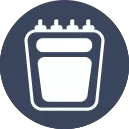Field controls are devices installed directly into pipelines or equipment to measure, monitor, and control such conditions as pressure, flow, and temperature.
By signalling or acting when certain pre-set limits are reached, they help ensure that systems continue to work safely, efficiently, and reliably.
Types of Field Control Devices
There are many types of field controls for different use-cases. Common types include pressure switches, flow switches, temperature sensors and switches, solenoid valves, regulators and transducers.
Pressure Switches
Pressure sensors sense when pressure has risen above or has fallen below a threshold value. When they do, they close or open an electric contact that sets off an alarm, activates a pump or dials down a system.
- Industrial Pressure Switches: Built for rugged applications and a full range of pressures. They safeguard applications by reacting immediately to overpressure and underpressure.
- Sanitary Pressure Switches: For food, beverage and pharmaceutical service. They have to observe stringent hygienic conditions to prevent pollution.
- Differential Pressure Switches Differential pressure indicates the difference between two pressure inputs. They turn on when the difference reaches some threshold value, typically employed for filter plugging or flow deviation sensing.
Flow Switches
Flow switches detect the flow or liquid or gas within a pipe. When flow slows or ceases to a pre-set minimum, they sound an alarm to avoid damage such as pump dry-run.
- Mechanical Vane Flow Switches: Utilize a swinging paddle or vane which sways with the flow. A switch is actuated by the vane when the flow moves the vane beyond its set point.
- Electronic Flow Switches: Uses detecting elements (Heat, Magnet or Ultrasonic type) for more accurate leak detection. They frequently have a selectable setpoint and digital outputs.
- Universal Flow Switches: For use with both liquids and gases in a wide range of flow rates. They are suitable for a wide variety of applications requiring flexibility.
Temperature Sensors and Switches
Temperature field manipulation implements sensors such as temperature sensors and switches that react at a predetermined temperature. They help prevent systems from overheating and maintain processes within safe limits.
- RTD (Resistance Temperature Detector) Sensors: They have high accuracy and reliability. Suitable for applications needing exact temperature control.
- Thermocouple Sensors: They have rapid response and very high temperature capabilities. It is usually used as lining of kilns, furnaces, and engines.
- Temperature Switches: Tosses together sensing and switching. They open or close contacts in the event of the temperature rising or dropping across a predetermined level, ideal for basic on/off control.
Solenoid Valves
Solenoid valves are electrically actuated devices, and when a pair of electrical connections is placed on these devices, they open or close the fluid or gas flow. They are used as control switches in automated systems.
- Direct-Acting Solenoid Valves: Open when the pressure in the space to fill has reached a certain value. They are designed for the small volume flow rates and low-pressure systems.
- Pilot-Operated Solenoid Valves: Apply system pressure to assist with opening and closing the valve. They process greater flow rates and pressures.
- 2-Way, 3-Way, and 4-Way Valves: Provide basic on/off function with spools that can direct and release fluids to create more complex routing and control of fluids in hydraulic and pneumatic circuits.
Pressure Regulators
Pressure regulators keep downstream pressure constant independent of the upstream pressure. They safeguard sensitive instruments and help maintain stable process conditions.
- Single-Stage Regulators: Lower pressure gradually for gradual pressure reduction with these two-stage regulators. They are right middle of the road, general use speakers.
- Two-Stage Regulators: Drops outlet pressure in two steps to deliver a more consistent outlet pressure. They provide improved guidance where need stability.
- Back-Pressure Regulators: Regulates upstream pressure by bleeding off excess flow when pressure reaches the set point. They are pump or compressor guard screens.
Pressure and Temperature Transducers
Transmitters change physical pressure or temperature to an electrical signal (e.g., 4–20 mA or 0–10 V). They enable control systems and data loggers to scan and log data continuously.
- Pressure Transducers: Utilize strain gauges or piezoelectric elements to determine absolute, gauge, or differential pressure and output a proportional electrical signal.
- Temperature Transducers (Transmitters): Linearize and condition an RTD or thermocouple signal. These subcontrol panels provide common outputs for easy interface to tripping devices.
Benefits of Field Controls
Field control devices offers several important benefits for any fluid or gas system.
Enhanced Safety
Hazardous conditions are averted by field controls because they observe key parameters and react when the reading strays from safe levels. They are able to sound alarms or disable equipment before damage or harm is done.
Improved Efficiency
Optimizing pressure, flow and temperature will minimize waste and energy consumption. A flow switch can turn on a pump when there is fluid to pump, avoiding damage from running dry and conserving power.
Better System Reliability
Controls of high quality minimize unanticipated downtime. Sturdy devices and reliable repeatability guarantee a constant performance and longevity.
Compliance with Standards
Many applications call for systems that are certified for various standards (UL, CE, ATEX, FDA). Approved field controls to assist in meeting legal and safety requirements.
Common Applications
Field controlled devices are utilized in various industries. Here are a few key areas:
HVAC and Building Automation
- Pressure switches are used to safeguard chillers and boilers.
- Flow switches to optimize air managements and water flow.
- Thermosensors keep indoor temperatures pleasant.
Water and Wastewater Treatment
- Flow switches are used for chemicals dosing supervision.
- Pressure regulators safeguard against membrane and filter damage.
- Transmitters transmit data to process control systems.
Oil and Gas
- Wellhead equipment and flowlines are operated via solenoid valves.
- Pipeline integrity is monitored by means of pressure transducers.
- Differential switches for detection of obstruction or leakage.
Food, Beverage, and Pharmaceutical
- Hygienic versions comply clean-in-place cycles are also available with sanitary pressure switches.
- Temperature sensors help maintain pasteurization processes within safe limits.
- Gas pressure is regulated by regulators with packaging machines.
Industrial Manufacturing
- Hydraulic presses and injection molding machines are also protected against temperature and pressure.
- Coolant and lubricant circuits are controlled by flow switches.
- They are designed as complete integrated system with transducer interface to the Scada for real time monitoring.
Best Practices of Installation
Correct installation is crucial for good and reliable performance. By doing that, it ensures the devices function properly.
- Flush and clean piping before installing instruments to eliminate debris.
- Tighten fittings to manufacturer specifications to avoid leaks.
- Positioning Switches and Sensors at the Right Angle and Height.
- Play it safe, and use an appropriate sealant or gasket to prevent any leakage or contamination.
- Adhere to electrical codes and use appropriate cable glands to secure wiring.
Conclusion
Control valves are common elements in fluid and gas systems and assemblies. With proper selections, maintenance and installation methods, users can obtain safe, efficient and capable process control using these kinds of pressure switches like flow switches, temperature sensors, solenoid valves, regulators and transducers.


